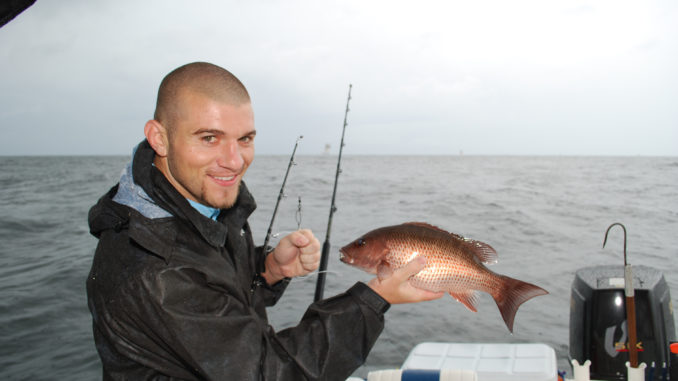
Why circle hooks aren’t just the law, but extremely effective for offshore fishing.
I remember the first circle hook that I ever saw, in the late-1960s. The angler who showed it to me called it a “tuna hook.” I picked it up, looked at it closely and then tried to hook myself with it. I couldn’t. And I concluded that it was the dumbest invention ever foisted off on fishermen. It looked like a hook that was designed NOT to catch fish.
But catch fish they do. And like them or not, they are the law of the land now when fishing for reef fish in the Gulf of Mexico.
Commercial fishermen have used these hooks for years. Both longline and snapper reel fishermen prize them for their ability to catch fish on unattended gear, their retention of hooked fish and their safety on the deck of a fishing vessel.
While circle hooks can be used on some artificial lures, they really come into their own when used in any presentation that uses live or natural bait. Even trollers can and do use circle hooks. For trolling, it is best to attach the bait to the shank of the hook with a rubber band or waxed string rather than to try to pass a hook through the bait.
A big advantage that circle hooks offer is that fish are almost never deep-hooked. When a fish takes the bait and attempts to swim off, the hook pulls out of the throat and into a corner of the mouth, where the hook rotates and pierces the jaw, usually in the corner. Once the fish is hooked, it finds that it is almost impossible to shake the hook. Also, fish hooked in the corner of the mouth tend to fight better than deep-hooked fish.
The reason that circle hooks are mandated for use in snapper fishing is that jaw-hooked fish have a much higher survival rate after release than deep-hooked fish. A high survival rate of released fish is critical in fisheries for species under strict management with minimum and/or maximum size limits. Typically, these fish species are classified as overfished or are heavily fished species being intensively managed to prevent overfishing.
Circle hooks offer other advantages. When properly used, catch rates are much higher than with J-shaped hooks. They are safer, with no exposed point to hook a fellow fisherman. Circle hooks are also much less likely to snag bottom or debris.
Fish with sharp teeth are less likely to cut the line when they are hooked in the corner of the mouth. Fewer fish are lost, and fishermen can use lighter leaders, which may improve catch rates.
Two challenges exist with circle hooks. First-time recreational anglers will need re-education not to set the hook violently in response to a bite. Doing so will pull the hook from the mouth of the fish nearly every time. If the fish hasn’t already hooked itself, the angler should simply reel in enough line to feel the fish on the line, then begin retrieving the bait. Fishermen who have difficulty breaking the habit of jerking the rod to set the hook may want to try putting the rod into a holder and fishing “dead stick.”
Another issue with circle hook use is the lack of standardization of hook sizes between manufacturers. This makes ordering circle hooks from catalogs confusing.
When choosing a circle hook, the gap between the point and the shank is critical. That gap must be wide enough to both fit the lip of the fish being targeted and at the same time allow room for the bait.
A wider gap also makes the hook easier to bait up and remove from the fish. Some newer circle hooks, such as the Mustad Demon Circle and the Daiichi Wide Circle have larger gaps.
Editor’s note: This article is part of The Sucker Punch feature in the August issue of Louisiana Sportsman. Digital editions can be downloaded right to your computer or smartphone.
Be sure to subscribe to ensure you don’t miss a single information-packed issue of Louisiana Sportsman.


